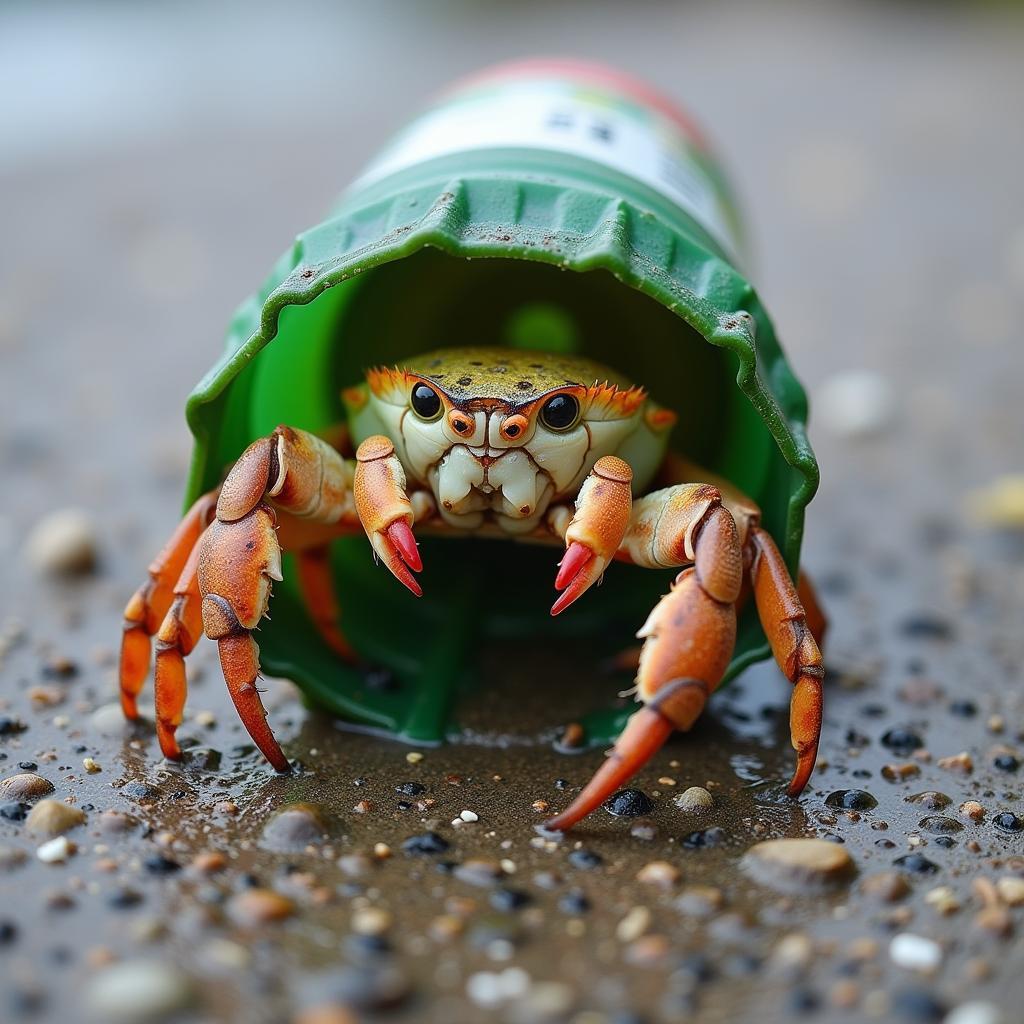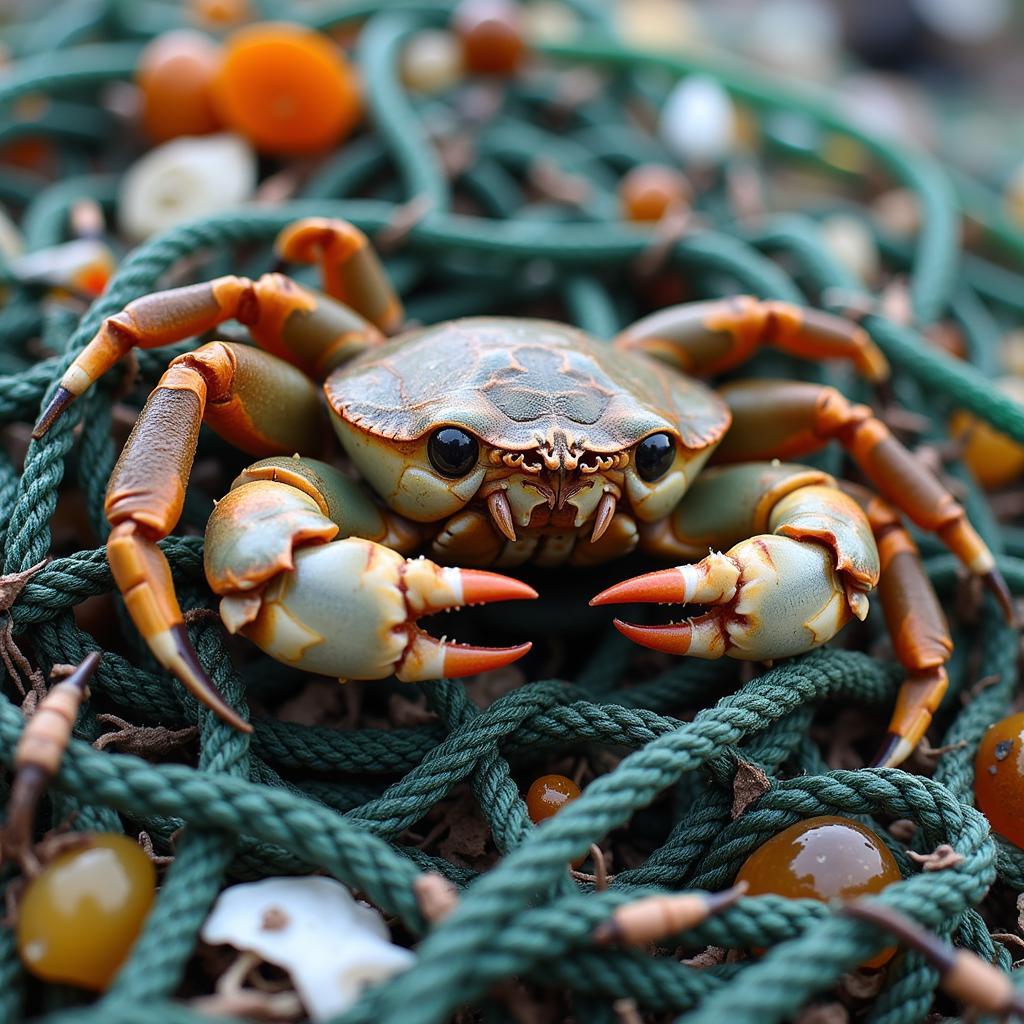Plastic Crabs. It sounds like a strange joke, a play on words, perhaps. But the truth is, they’re a very real, and very concerning, consequence of our plastic pollution problem.  Cua nhựa mắc kẹt trong vỏ chai
Cua nhựa mắc kẹt trong vỏ chai
You see, while we might enjoy a good crab boil, using plastic cutlery and discarding the remnants into the environment, those plastic fragments don’t just disappear. They break down into smaller and smaller pieces, eventually becoming microplastics. And these microplastics? They end up everywhere, from the deepest ocean trenches to the seafood on our plates.
A Crab’s Life, Interrupted
For marine animals, especially those at the bottom of the food chain like crabs, microplastics pose a significant threat. These tiny plastic pieces can be mistaken for food, leading to ingestion and a false sense of fullness. Imagine a crab, its tiny stomach packed with plastic, unable to eat the nutrients it needs to survive. This can lead to starvation, stunted growth, and even death.
But the dangers don’t stop there. Microplastics act like sponges, absorbing harmful pollutants from the surrounding water. When ingested by marine life, these toxins accumulate in their tissues, moving up the food chain with each predator.  Cua bị vướng vào lưới nhựa
Cua bị vướng vào lưới nhựa
Beyond the Shell: The Bigger Picture
The issue of plastic crabs, or more accurately, crabs impacted by plastic, is a stark reminder of the far-reaching consequences of our actions. What we do on land doesn’t just stay on land. It washes into our waterways, travels across oceans, and ultimately impacts the very ecosystems we depend on.
So, the next time you reach for that plastic straw, that single-use plastic bag, or that plastic bottle, remember the crabs. Remember the interconnectedness of our planet and how our choices, however small they may seem, have the power to create ripples of change.
Choosing a Better Way
The good news is, we can all be part of the solution. By making conscious choices to reduce our plastic consumption, we can help protect marine life and preserve the health of our oceans. Here are a few simple steps you can take:
- Refuse single-use plastics: Opt for reusable alternatives whenever possible.
- Recycle responsibly: Make sure you’re disposing of plastic waste properly.
- Support organizations: Get involved with groups working to combat plastic pollution.
Together, let’s choose to be part of the solution, not the pollution. Let’s leave a legacy of clean oceans and thriving marine life, free from the threat of plastic.